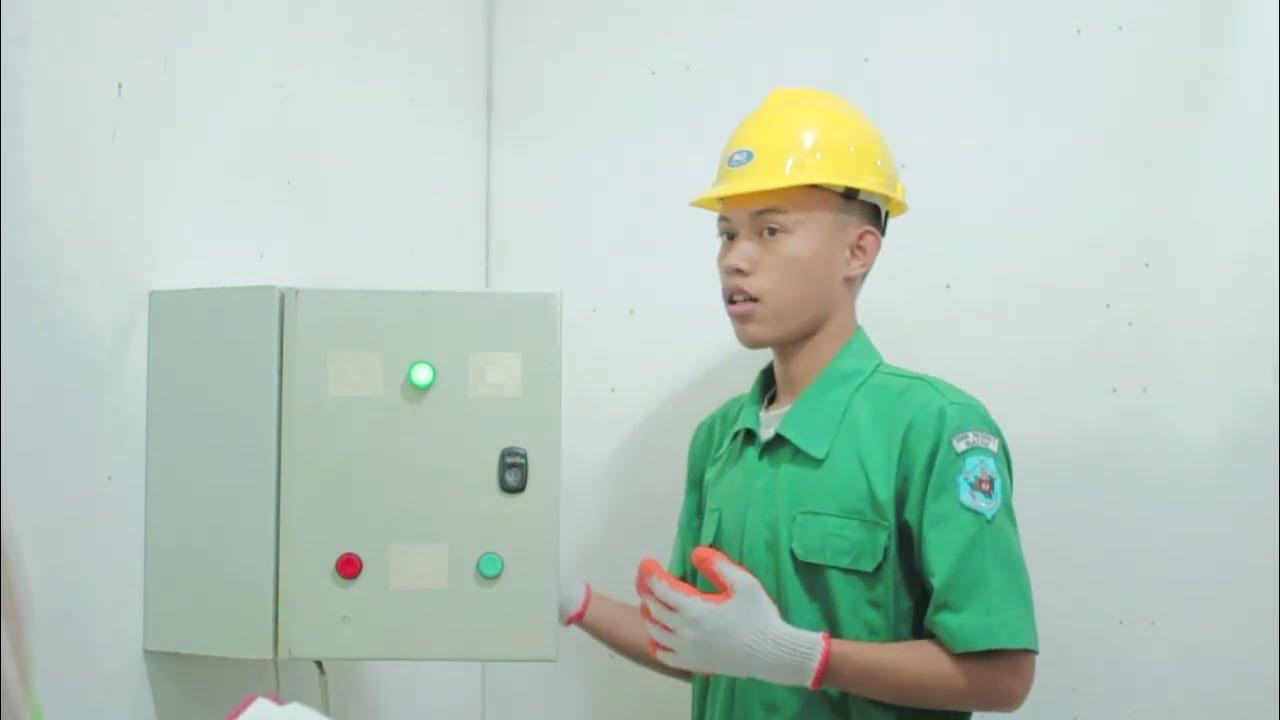Construction of Three Phase Induction Motor | Electrical & Electronics Engineering
Summary
TLDRThis video script provides a detailed explanation of how a three-phase induction motor is constructed. It breaks down the components of the motor, including the stator, rotor, and end bells, describing their materials and functions. The stator is made of laminated steel and copper coils, while the rotor includes conducting rods and end rings. The motor's construction process involves winding the stator coils, assembling the rotor, and finally enclosing the motor with end bells. The video highlights the advantages of the squirrel cage rotor, which is commonly used due to its durability and ease of construction.
Takeaways
- 😀 A three-phase induction motor is widely used in applications such as escalators and paper industries.
- 😀 The motor consists of three main components: the stator, rotor, and two end bells.
- 😀 The stator is the stationary part of the motor, which includes the core, conducting wires, and frame.
- 😀 The stator core is made of high-grade alloy steel rings that are laminated and insulated from each other.
- 😀 The conducting wires in the stator are made of copper and form the stator coils, which are responsible for generating the magnetic field.
- 😀 The stator frame is made of cast or fabricated iron and is equipped with cooling fins to improve heat dissipation.
- 😀 The rotor is the rotating part of the motor and consists of a core, conducting rods, and two end rings.
- 😀 The rotor core is cylindrical and made from high-grade alloy steel with parallel slots on the outer periphery.
- 😀 There are two types of rotors: squirrel cage rotor (most common) and phase wound (slip ring) rotor, based on the slot arrangement.
- 😀 The rotor conducting rods are made of copper, aluminum, or alloys and are short-circuited by end rings to form the electrical circuit.
- 😀 The end bells, made of the same material as the frame, protect the motor and hold the rotor in place during operation.
Q & A
What are the main components of a three-phase induction motor?
-The main components of a three-phase induction motor are the stator, rotor, and two end bells.
What is the role of the stator in a three-phase induction motor?
-The stator is the stationary part of the motor and provides the magnetic field necessary for the motor to operate. It consists of a core, conducting wire, and a frame.
What materials are used in the construction of the stator core?
-The stator core is made from high-grade alloy steel, and it is constructed using insulated laminated rings.
Why is the stator frame made of alloy cast iron or fabricated iron?
-The stator frame is made from alloy cast iron or fabricated iron to provide structural support, protection, and to aid in heat dissipation.
What is the function of the cooling fins on the stator frame?
-The cooling fins on the stator frame increase the heat-dissipating area, helping the motor maintain proper temperature without increasing its overall diameter.
What is the difference between a squirrel-cage rotor and a phase-wound rotor?
-The squirrel-cage rotor has slots that are not parallel to the shaft, while the phase-wound rotor has parallel slots. The squirrel-cage rotor is more commonly used due to its advantages over the phase-wound rotor.
What materials are used for the conducting rods in the rotor?
-The conducting rods in the rotor are made from copper, aluminum, or alloys.
What is the purpose of the end rings in the rotor?
-The end rings are used to short-circuit the rotor winding rods and connect them to the core, ensuring proper functionality of the rotor.
How is the rotor assembled in the motor?
-To assemble the rotor, conducting rods are inserted into the slots of the rotor core, and end rings are welded to both sides of the rotor to short-circuit the winding rods.
What is the final step in the construction of a three-phase induction motor?
-The final step involves placing the rotor inside the stator and attaching the two end bells to form a complete three-phase induction motor.
Outlines

Cette section est réservée aux utilisateurs payants. Améliorez votre compte pour accéder à cette section.
Améliorer maintenantMindmap

Cette section est réservée aux utilisateurs payants. Améliorez votre compte pour accéder à cette section.
Améliorer maintenantKeywords

Cette section est réservée aux utilisateurs payants. Améliorez votre compte pour accéder à cette section.
Améliorer maintenantHighlights

Cette section est réservée aux utilisateurs payants. Améliorez votre compte pour accéder à cette section.
Améliorer maintenantTranscripts

Cette section est réservée aux utilisateurs payants. Améliorez votre compte pour accéder à cette section.
Améliorer maintenantVoir Plus de Vidéos Connexes

Cara Desain Dinamo - (Motor Induksi 3 Fasa)

Star Delta Starter Explained - Working Principle

How does a fan work ? | Single phase induction motor

penjelasan dan pengenalan bagian - bagian dari motor listrik 3 phase || motor induksi 3 fase

Video Pembelajaran Mengoperasikan Sistem Elektronik

Single phase Induction Motor / Capacitor start capacitor run motor / Capacitor start induction motor
5.0 / 5 (0 votes)
